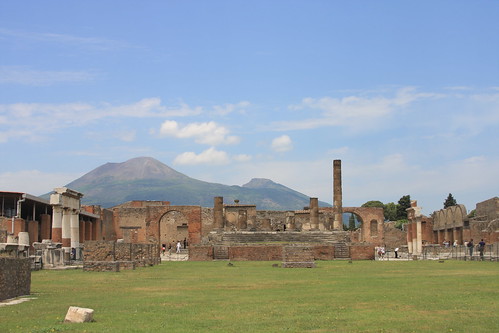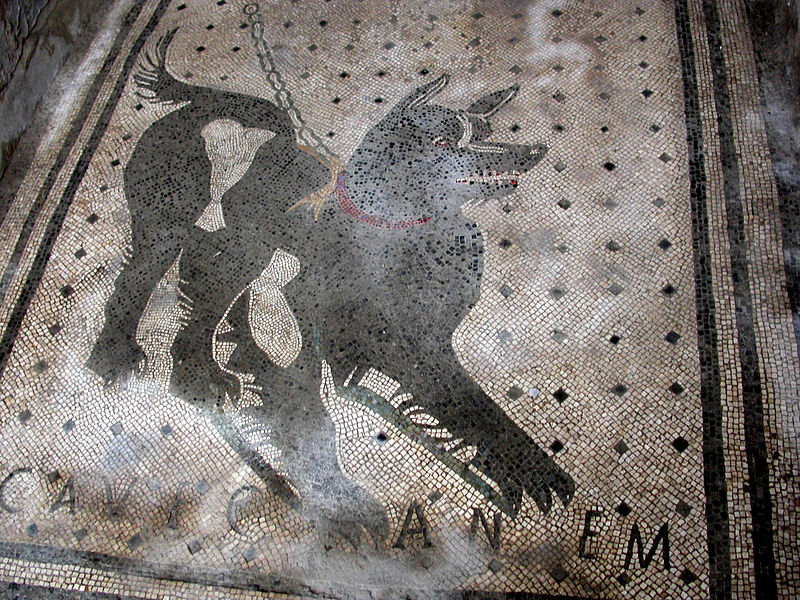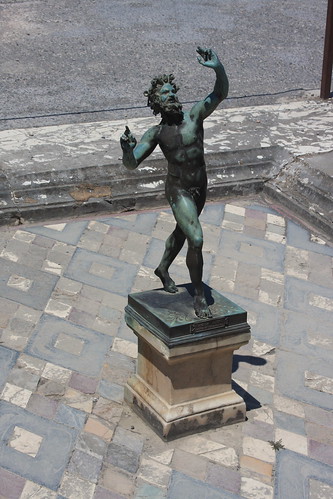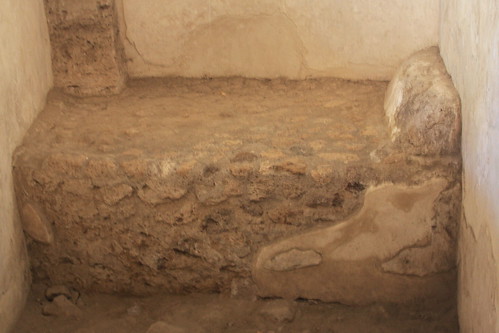
Yes, we walked the rocky slopes of an active volcano, and looked down into its steaming caldera from the very top - how many people can say that? In the picture of Laura below, you can see a steam released from a vent inside the caldera.

Mt. Vesuvius has erupted many times in its history (most recently in 1944), but the most famous eruption is undoubtedly that of 79 AD when it buried the nearby Roman cities of Pompeii and Herculaneum. Pompeii was buried under 30-60 feet of volcanic ash. A view like the below probably looks pretty good until the ground starts shaking, the sky turns black, and fiery debri starts raining down, huh? After the eruption, Pompeii was forgotten for more than 1500 years before rediscovery, and then serious excavations commenced almost 150 years later still in 1748.

The violent eruption stopped Pompeii dead in its tracks, resulting in a ruined city that was literally frozen in time. Many residents were buried alive beneath the volcanic ash and rock, which left behind hollow spaces after the bodies decomposed. Some clever archaeologists made casts of the spaces during excavation, and now tourists can actually see the contorted poses of horrified Pompeiians preserved forever in plaster. But that's not all: Roman homes, "fast food" joints, and even the local brothel were all preserved very well, all things considered.

The most astounding part about Pompeii was seeing the standard of living enjoyed by the Romans (specifically the middle-class Pompeiians) nearly two millennia ago; it was almost like walking into an episode of the Flintstones, where everything is similar to what we enjoy today but decidely lower-tech. They had running water, large homes, excellent roads, interior decorations, etc. For instance, inside the House of the Tragic Poet is the famous Cave Canem (Beware of Dog) mosaic/entry mat...

... or the statue of the Dancing Faun in Pompei's largest home:

We also found the Roman brothel extremely entertaining, both for its intact menu of services and the makeup of the individual rooms - complete with solid stone bed (below). Some of the artifacts dug up in Pompeii, in fact, still make archaeologists blush to this day.

Pompeii is one of Italy's most visited sites, and we certainly can see why. It was incredible to walk the streets of such a well-preserved testament of Roman life. (More pictures are on Flickr.)





No comments:
Post a Comment